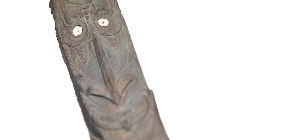In the nineteenth century, when measuring the skull reached the apex of its popularity, craniologists and anthropologists were keen on dissecting the brains of important personages. Outstanding thinkers were urged to donate their brains to science after death. The comparison of how much different brains weighed met with great public interest. As a matter of fact, some exceptional geniuses had relatively heavy brains. The brain of the great mathematician Friedrich Gauss weighed only an average 1,492 grams, which proved to be a serious problem for research at that time.1 The popularity of measuring the human skull in the nineteenth century can only be understood in light of the prevailing theories of the time. Evolutionary biology, with its hypothesis of different stages of human development, influenced anthropometry and the practice of measuring. It has been proven today that the size of the brain does not correlate with intelligence. Our ability to think logically, to plan and to remember is located in the cerebral cortex with twelve to twenty-six billion neurons, which, with their extremely good conduction speed, determine human intelligence.2
Measuring Size: brain weight Gauss
Anna Karsko
see Bibliography here ‹Measuring size: normal weight›
Serena Lo Presti, MKB
Short movies
Curators in dialog with objects (in German only, with an English summary)
Trailers
Specials












































